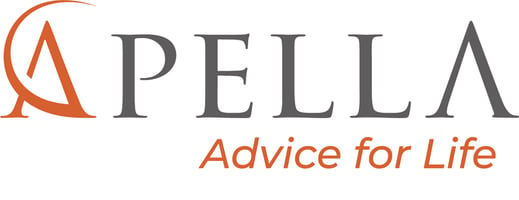Apella Wealth Blog

Maximizing Retirement Savings with Student Loan Matching
Younger adults with student loan debt often must sacrifice retirement savings in favor of debt repayment. One-in-four U.S. adults under the age of 40 have student loan debt, and when you narrow the population to those with a bachelor’s degree, it’s more like one-third.1 While the federal government does not seem willing to forgive student loan debt on a broad scale, a new change allows employers to match qualified student loan payments in employee’s qualified retirement plans, including 401(k) plans, 403(b) plans, SIMPLE IRA plans, and 457(b) plans. In other words, employees with this plan option will be able to turn their student payments into retirement savings. 2
The introduction of this benefit is part of the SECURE 2.0 Act, a significant piece of legislation aimed at enhancing retirement savings options for Americans. Officially, this option took effect in 2024, but few employers currently offer the benefit.3 Part of the reason for the slow rollout from employers is that they must update plan documents, establish systems to verify student loan payments, and communicate the program effectively to employees. According to a recent survey, about 5% of employers have added this benefit, with an additional 12% of employers saying they are “very likely” to adopt these changes in 2025, while 29% are “moderately likely” to adopt.3
For employees, the first step is understanding eligibility. To take advantage of the new rule, workers must ensure their student loan payments qualify under their employer’s plan. This means staying informed about specific plan details, such as payment documentation requirements. It’s equally important to assess how much of your student loan payments might trigger employer contributions and whether you are maximizing this benefit.3
Looking ahead to 2025, individuals should align their debt repayment strategies with retirement goals. Prioritizing high-interest loans while leveraging the employer match can maximize financial benefits. Simultaneously, employers should review employee participation rates and consider enhancements, such as expanded financial wellness programs, to further support their workforce.
If your company does not currently offer this benefit, it’s important to communicate with your Human Resources (HR) department. Start by scheduling a meeting to discuss the potential advantages of implementing the student loan matching program. Highlight how this benefit can improve employee retention and satisfaction. Provide data or examples from other companies who successfully adopted the program. Be prepared to explain how the program works and address any concerns your HR team might have about the implementation process. By showing initiative and providing clear information, you can help your employer understand the value of this benefit and potentially advocate for its adoption.
With proper planning, the student loan matching feature under the SECURE Act 2.0 has the potential to alleviate financial stress while promoting long-term retirement savings. Staying informed and being proactive are key for maximizing these benefits.
Resources:
- 5 facts about student loans | Pew Research Center
- Guidance under section 110 of the secure 2.0 act with respect to matching contributions made on account of qualified student loan payments
- More employers add 401(k) plan match for workers paying student loans
- Secure Act 2.0 | What the new legislation could mean for you
Disclosures:
Apella Capital, LLC (“Apella”), DBA Apella Wealth is an investment advisory firm registered with the Securities and Exchange Commission. The firm only transacts business in states where it is properly registered or excluded or exempt from registration requirements. Registration with the SEC or any state securities authority does not imply a certain level of skill or training. Different types of investments involve varying degrees of risk, and there can be no assurance that the future performance of any specific investment, investment strategy, product or any non-investment-related content made reference to directly or indirectly in this material will be profitable, equal any corresponding indicated historical performance level(s), be suitable for your portfolio or individual situation, or prove successful. Due to various factors, including changing market conditions and/or applicable laws, the content may not be reflective of current opinions or positions. Please note the material is provided for educational and background use only. Diversification seeks to improve performance by spreading your investment dollars into various asset classes to add balance to your portfolio. Using this methodology, however, does not guarantee a profit or protection from loss in a declining market. Past performance does not guarantee future results. All data is from sources believed to be reliable but cannot be guaranteed or warranted.
No current or future client should assume that any discussion or information contained in this material serves as the receipt of, or as a substitute for, personalized investment advice. As with any investment strategy, there is the possibility of profitability as well as loss.
Apella Wealth does not provide insurance services or legal advice and nothing either stated or implied here should be inferred as providing such advice.
Related Articles
From Building Wealth to Creating Meaning: Charitable Giving at Life’s Milestones
Reaching a milestone birthday or entering retirement is about more than celebrating the years...Making the Most of Your Beneficiary IRA
As baby boomers age, many find themselves the beneficiaries of a deceased parent or sibling’s...
